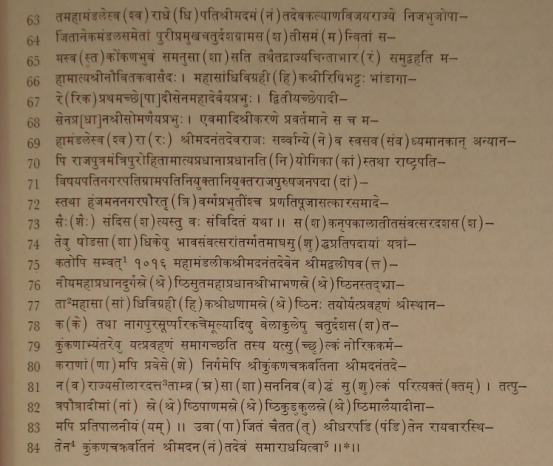|
The Indian Analyst
|
North Indian Inscriptions |
INSCRIPTIONS OF THE SILAHARAS OF NORTH KONKAN
Third Plate
TRANSLATION Success ! (For the translation of verses 1 to 22, see that of the same verses in the Ṭhāṇā Plates of Mummuṇi, No. 11.) ..(Verse 22). When that king (viz., Mummuṇi) attained the body of excellent fame (i.e. died), Ananatapāla, the son of Nāgārjuna, the princely jewel in the Sīlāra family, the Sovereign in respect of political wisdom, who has a pure form on account of his performance of highest duty, became king. .. (V. 23). He‒who drove out those violent and vile Yavana soldiers of Muna (?), who having become powerful, had devastated this Kōṅkaṇa country, harassing gods and Brāhmaṇas, by means the torrents of water in the form of the sharp edge of his sword, when there was trouble in the kingdom owing to hostile kinsmen‒inscribed his fame on the disc of the moon, as he helped the head of his family.
..
(V. 24). While the moon-like Chief among kings is righteously governing the earth,
having freed it from hostile warriors, (he ) who is like the wish-fulfilling jewel to suppliants,
a veritable lovely god of love to deer-eyed women and a unique warrior in the world‒
[1] Read संवत्.
|
|||||||||||||||||||||||||||||||||||||||||||||||||||||||||||||||||||||||||||||||||||||||||||||||||||||||||||||||||||||
| > |
|
>
|








